One of the most powerful realizations I’ve had in sales is that not all tasks are created equal. Some activities move the needle; others just keep us busy. The real trick is getting laser-focused on the tasks that bring real results and letting go of the rest. I call these “high-value activities”—they’re the backbone of my calendar and the key to hitting my targets consistently.
What Makes an Activity High-Value?
High-value activities are the tasks that directly drive your success, plain and simple. In sales, these are the actions that push deals forward, build new connections, or create opportunities that lead to closed deals. Think of it this way: if the task isn’t creating momentum in your sales funnel or setting you up for long-term gains, it’s not high-value.
For me, high-value activities fall into three categories:
- Prospecting: Time dedicated to reaching out to potential clients, finding new opportunities, and expanding my pipeline.
- Client Engagement: Engaging in meaningful conversations with existing or potential clients, understanding their needs, and addressing their concerns.
- Follow-Up Strategy: Following up on leads, reaching back to clients, and ensuring that every opportunity is pursued to its fullest.
These three activities are where my calendar starts. Everything else gets scheduled around these blocks, not the other way around.
Finding Your Own High-Value Activities
So, how do you know what’s high-value for you? The answer lies in looking at your goals. Start with a list of what you need to achieve this quarter, this month, and even this week. From there, ask yourself which tasks are essential to meeting those goals. A lot of people struggle here, thinking everything is important. But when you get honest, you’ll see that only a few activities are actually driving results.
When I first did this exercise, I noticed how much time I was spending on tasks that felt productive but didn’t really impact my bottom line. For instance, I spent a lot of time on internal meetings and administrative work. Once I realized these tasks didn’t contribute directly to closing deals or building my pipeline, I started delegating or limiting them, which freed up more time for what mattered most.
The Trap of “Busy” Work
One of the biggest challenges to identifying high-value activities is getting caught up in “busy” work. These are the tasks that feel urgent but don’t contribute to long-term success—answering low-priority emails, scrolling through CRM updates, or tweaking your slides to perfection. If you’ve ever ended a day feeling exhausted but not accomplished, you were likely buried in busy work.
I fell into this trap early in my career, thinking I had to stay “busy” all day to be successful. But busy work drains your time and energy, and it rarely drives real results. Once I let go of the urge to be constantly doing something, I could focus on fewer, more impactful tasks.
Balancing Long-Term and Short-Term High-Value Activities
Not all high-value activities yield immediate results, and that’s where the challenge lies. Some of the most critical tasks—like prospecting or nurturing client relationships—are long-term plays. They don’t pay off today but are crucial for future success.
Take content creation, for instance. I started writing LinkedIn posts and blog articles to build my personal brand, and while the results weren’t immediate, the payoff has been huge. Prospects now come to me because they see my content and understand the value I bring. For me, content creation became a high-value activity because it supports my long-term goals of attracting clients and establishing trust before I even make contact.
Evaluating Your High-Value Activities Regularly
Your priorities can change over time, so it’s essential to reevaluate what’s truly high-value regularly. I check in at the end of each quarter and look at my results. Did the activities I focused on deliver? Is my pipeline where I want it to be? What could I improve next quarter? This exercise keeps me aligned with my goals and ensures I’m investing time where it matters most.
How to Stay Committed to Your High-Value Activities
Once you’ve identified your high-value activities, the real challenge is sticking to them. It’s easy to let distractions, urgent tasks, or requests from others get in the way. But the most successful salespeople guard their time fiercely. Here are a few ways I protect my high-value time:
- Time Blocking: I put my high-value activities on the calendar just like client meetings. Once it’s on the calendar, it’s non-negotiable.
- Learning to Say No: This was hard for me, but saying no to low-priority requests is crucial. If it’s not driving my goals, it doesn’t get my time.
- Keeping Myself Accountable: I regularly track my activities against my goals. If I’m slipping, I know it’s time to refocus and get back to my core tasks.
Let Your High-Value Activities Drive Your Success
Identifying and committing to high-value activities changed the game for me. It streamlined my day, boosted my results, and ultimately led to more sales success with less stress. If you’re ready to level up, start by carving out time for those tasks that genuinely make a difference. Guard those activities like your sales numbers depend on it—because they do.
